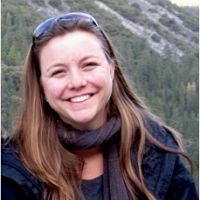Pelletier & Orem, 2014
How do sediment yields from post-wildfire debris-laden flows depend on terrain slope, soil burn severity class, and drainage basin area? Insights from airborne-lidar change detection
Pelletier J.D. and Orem C.A. (2014)
Earth Surface Processes and Landforms 39(13): 1822–1832
-
Catalina-Jemez, INVESTIGATOR
-
Catalina-Jemez, GRAD STUDENT
Abstract
We derived a high-resolution, spatially continuous map of erosion and deposition associated with the debris-laden flows triggered by the 2011 Las Conchas wildfire and subsequent rainstorms over a 197 km2 area in New Mexico, USA. This map was produced using airborne-lidar-derived bare-earth Digital Elevation Models (DEMs) acquired approximately one year before and one year after the wildfire. Differencing of the pre-wildfire and post-wildfire-and-rainstorm bare-earth DEMs yielded a DEM-of-Difference (DoD) map that quantifies the magnitude of ground-surface elevation changes due to erosion/deposition within each 1 m2 pixel. We applied a 0.3 m threshold filter to our DoD to remove changes that could have been due to artifacts and/or imperfect georeferencing. The 0.3 m value for the threshold filter was chosen based on the stated accuracy of the lidar as well as a comparison of areas of significant topographic change mapped in aerial photographs with those predicted using a range of candidate threshold values for the DoD filter. We developed an automated procedure that accepts the DoD map as input and computes, for every pixel in the DEM, the net sediment volume exported through each pixel by colluvial and/or fluvial processes using a digital routing algorithm. An analysis of the resulting sediment volume map for the Las Conchas fire demonstrates that sediment volume is proportional to upstream contributing area. After normalized by contributing area, the average sediment yield (defined as the sediment volume divided by the contributing area) increases as a power-law functions of the average terrain slope and soil burn severity class (SBSC) with exponents equal to approximately 1.5. Our analysis quantifies the relationships among sediment yield, average terrain slope, and average soil burn severity class at the watershed scale and should prove useful for predicting the geomorphic response of wildfire-affected drainage basins.
Citation
Pelletier J.D. and Orem C.A. (2014): How do sediment yields from post-wildfire debris-laden flows depend on terrain slope, soil burn severity class, and drainage basin area? Insights from airborne-lidar change detection. Earth Surface Processes and Landforms 39(13): 1822–1832. DOI: 10.1002/esp.3570
 This Paper/Book acknowledges NSF CZO grant support.
This Paper/Book acknowledges NSF CZO grant support.
Associated Data
Jemez River Basin - LiDAR - Terrestrial Laser Scan (2011-2013)
3 components •
Jemez River Basin, Jemez 2011 Burned ZOB •
GIS / Remote Sensing, Geomorphology •
Caitlin Orem; Jon Pelletier
Explore Further


